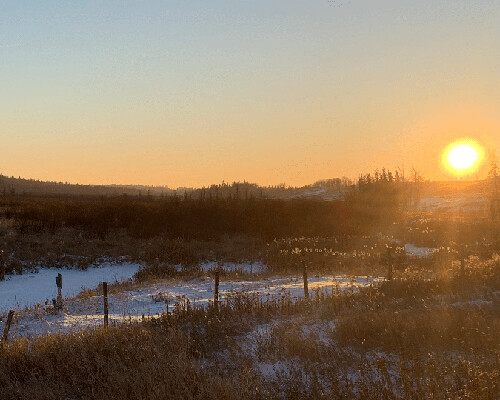Stewardship Showcase: Engaged Citizens Take the Lead

A keen team of volunteers is championing biodiversity in the Tawatinaw River valley.
Within the Athabasca Watershed, along the Tawatinaw River, which begins at Helliwell Lake and flows north to meet the Athabasca River at the Town of Athabasca, a small but dedicated group of residents are passionate about preserving the watershed they call home.
The Athabasca region has a strong history of stewardship, dating back to the 1970s. Despite the area’s low population, they’re deeply engaged in stewarding and preserving the area.
“The Tawatniaw kind of gets overlooked,” explains Sarah Shortt, Watershed Science Coordinator for the Athabasca Watershed Council (AWC). “But there are so many people who love that valley and love the river.” It was after the AWC held an open house to share the results of its Tawatinaw Watershed riparian assessment that the Tawatinaw Watershed Working Group (TWWG) was formed.
AWC staff support the administration and coordination of programs like the Water Ranger Backpack Kits to empower landowners to test water on their property, but the TWWG is a volunteer-driven organization.
“It’s so cool to see people in the group take the lead because they’re so keen, they love the valley so much and they know so much about it,” says Sarah. “The people in the area are really connected to the land. Some of them are newcomers, some are homesteaders. They all really value this land.”
There has long been interest in doing stewardship projects in the area, but residents struggled with knowing where to begin or how to secure funding. Thankfully, AWC, a Watershed Planning and Advisory Council (WPAC), has the knowledge and capacity to support this work.
The TWWG is only in its second year, but it’s building real momentum.
“Being up north and rural, there aren’t always a lot of opportunities,” Sarah explains. “The working group’s projects are really bringing the community together."
The working group came together after residents noticed the once-abundant Arctic Grayling had disappeared from the Tawatinaw. After the river was straightened to accommodate highway construction, the Grayling population was hit hard, which has trickle down effects on the whole ecosystem, as bears and cougars that eat the Grayling are seen less frequently in the watershed. Currently, the Government of Alberta classifies the Arctic Grayling as sensitive.
The group hopes that by promoting biodiversity and raising awareness of the watershed and the threats to it, the Arctic Grayling will return to the river. As they educate the community and offer biodiversity resources, they’re also collecting historical stories from residents who remember the Arctic Grayling in the Tawatinaw.
“We’re hoping if we can repair riparian areas, we might bring the Grayling back. It’s something that really brings people together, getting out with the community and doing some monitoring and tree planting,” Sarah adds.
The species is a rallying point for the community that not only wants to see the Arctic Grayling return, but to see the whole ecosystem of the river thrive for generations.
With the support of a recent Watershed Stewardship Grant (WSG) from Land Stewardship Centre, TWWG is creating a video about the Tawatinaw and its rich history to add to its awareness efforts.
“We’re hoping to have a movie night and share this video, and all the historic stories from the Tawatinaw,” Sarah says.
With funds from the WSG, the AWC and TWWG are building a strong stewardship community of stakeholders and citizens committed to the watershed’s preservation. Bringing together the passion and local knowledge of the stewardship group with the organizational know-how of the AWC empowers volunteers to care for the place they live.
“The AWC being the convener and collaborator for this group has been so meaningful to our mission. We get to support the people that know this area best, who are invested in it, and help them preserve the valley for their kids and grandkids,” Sarah adds.


Leave a comment